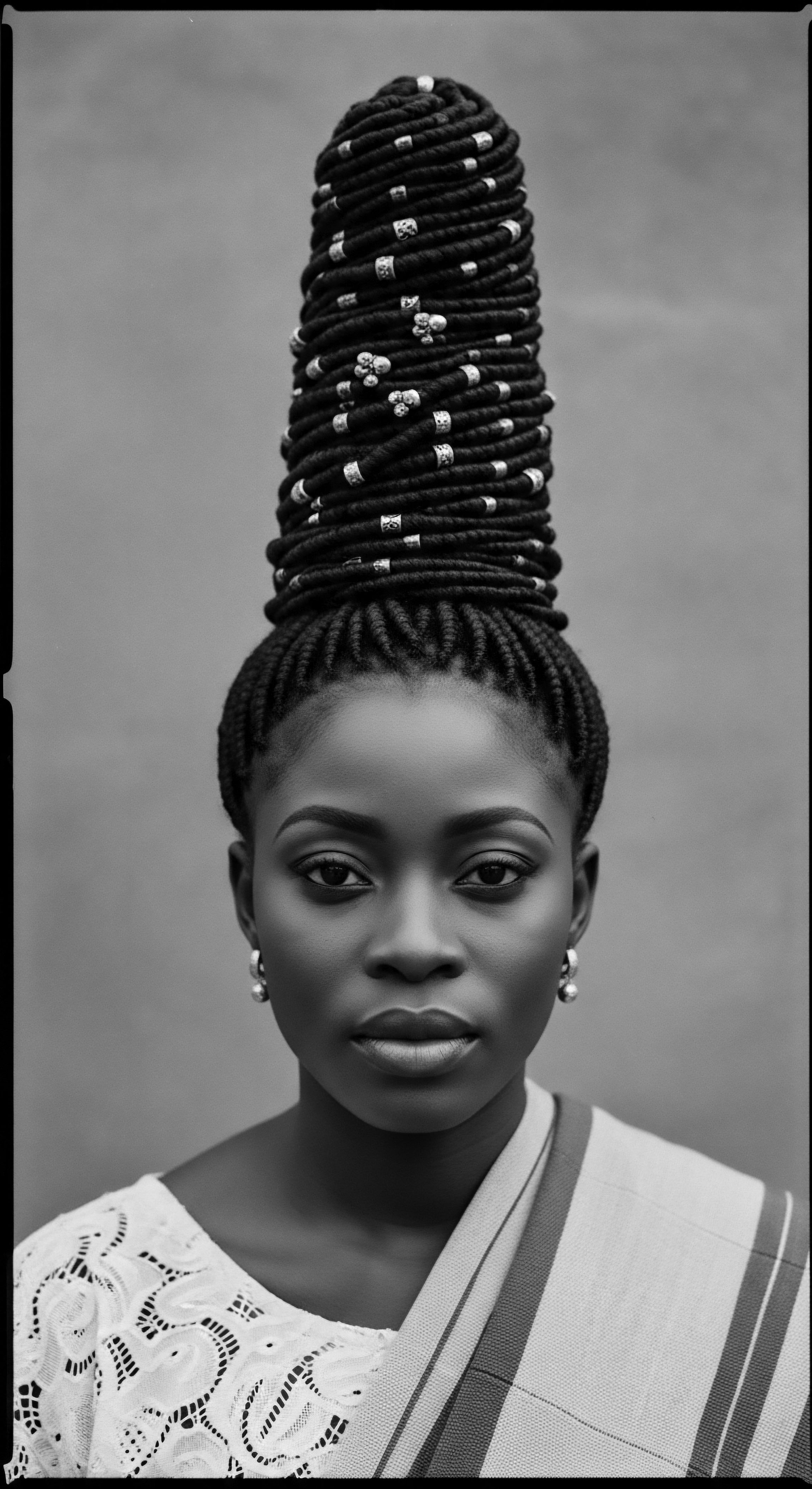
Roots
Consider the profound stillness of the night, when the day’s responsibilities subside, and the body seeks its restorative repose. For countless generations, across diverse landscapes of Africa and beyond, a simple, yet profoundly significant object offered sanctuary to more than just the weary head; it served as a silent guardian of cultural legacy, a preserver of identity expressed through meticulously fashioned strands. These were the headrests, humble in their form yet monumental in their purpose, particularly for those with hair that defied the soft, yielding embrace of modern pillows.
The textured hair, in its myriad forms – from the tightly coiled z-patterns of 4C Hair to the more open, springy spirals – holds a unique story of ancestral adaptation and resilience. This very architecture, a testament to human evolution in diverse climates, posed distinct considerations for daily existence, including sleep. Unlike straight hair, which might flatten or tangle easily against a soft surface, coiled and braided styles presented a challenge; disrupting their form meant hours, sometimes days, of skilled re-creation. The ancient headrest emerged from this very recognition, a clever solution born of necessity and deep understanding of hair’s inherent nature.

The Headrest’s Design and Hair’s Form
Ancient headrests were typically crafted from sturdy materials such as wood, stone, or even clay, designed not for cushioning the entire head, but for cradling the neck. This strategic elevation suspended the elaborate hairstyles above the sleeping surface, shielding them from compression, friction, and the accumulation of dust or debris. The underlying principle here aligns with modern trichology ❉ minimizing manipulation and external stress to preserve hair integrity.
For textured hair, prone to shrinkage and tangling when disturbed, this protective measure was paramount. It prolonged the life of intricate coiffures, allowing individuals to maintain their ceremonial, social, or aesthetic declarations for extended periods.
Ancient headrests functioned as ingenious structural supports, preserving complex hairstyles by cradling the neck and suspending coiffures from the sleeping surface.

Early Hair Lore and Structure
Long before the advent of microscopes or molecular biology, ancestral communities possessed a practical, observational understanding of hair. They recognized its delicate yet strong character, its tendency to knot, and its need for careful handling. The very act of styling textured hair – the braiding, twisting, and coiling – spoke to an intuitive grasp of its structural properties. Hair, at its elemental level, is a protein filament, primarily keratin.
The shape of the hair follicle, rather than the hair shaft itself, dictates the curl pattern. A round follicle produces straight hair, while an oval or flattened follicle yields wavy or tightly coiled hair. This inherent curl, while offering protection against solar radiation and aiding thermoregulation in warm climates, also means that each strand has multiple points of curvature, making it more susceptible to friction-induced damage. (Koch et al. 2020) The headrest provided a mechanical buffer against such damage during vulnerable hours of sleep.
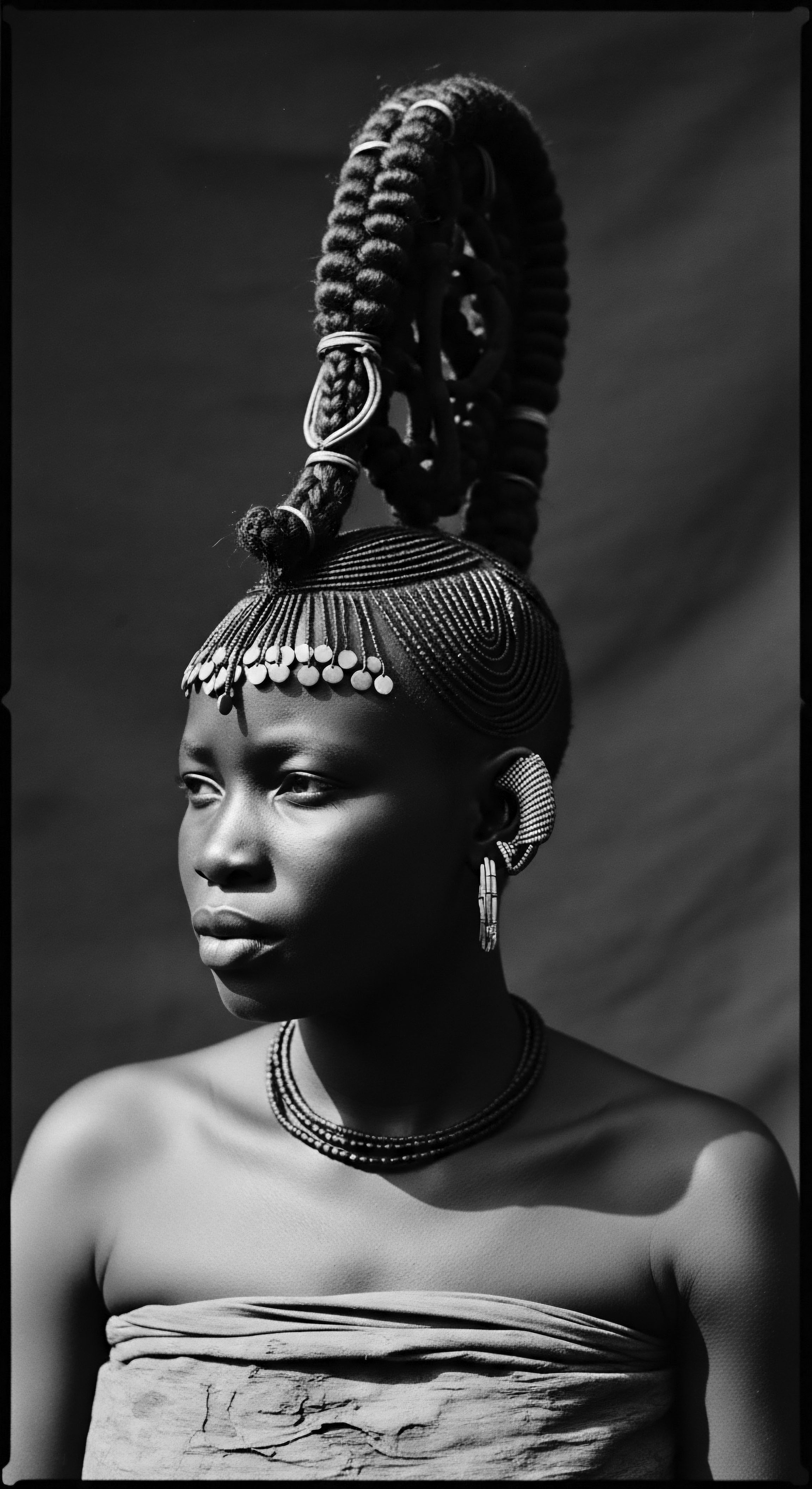
Cultural Mapping of Hair Classifications
Beyond the physiological, hair held immense cultural significance in ancient African societies, often serving as a visual lexicon. Hair classifications were not merely anatomical descriptors; they communicated age, marital status, social rank, ethnic affiliation, and even spiritual beliefs. (Akanmori, 2015) This deep societal coding of hair styles underscored the importance of their preservation.
- Dinka Coiffure ❉ Among the Dinka of South Sudan, particularly older men, elaborate hairstyles were markers of status. Their headrests, often also serving as stools, were essential for maintaining these coiffures and were considered highly personal possessions.
- Shona Hair Art ❉ The Shona peoples of Southern Africa, like the Dinka, used headrests to protect their intricate, well-oiled hairstyles, which sometimes incorporated tufts and beads. These headrests were often passed down through male heirs, linking generations.
- Zulu Isicholo ❉ While not a headrest itself, the Zulu married women’s elaborate Isicholo headgear (a wide, twined hat often built with natural hair and later fabric) required immense care. The practice of building one’s own hair into such a structure highlights the lengths to which communities went to create lasting, symbolic coiffures that would have necessitated specialized care, including careful resting.
The headrest, therefore, became a silent partner in the artistry of African hair, a tool that allowed these significant statements of identity to persist, literally, through the night. It represents a tangible link between ancestral ingenuity and the enduring reverence for textured hair heritage.
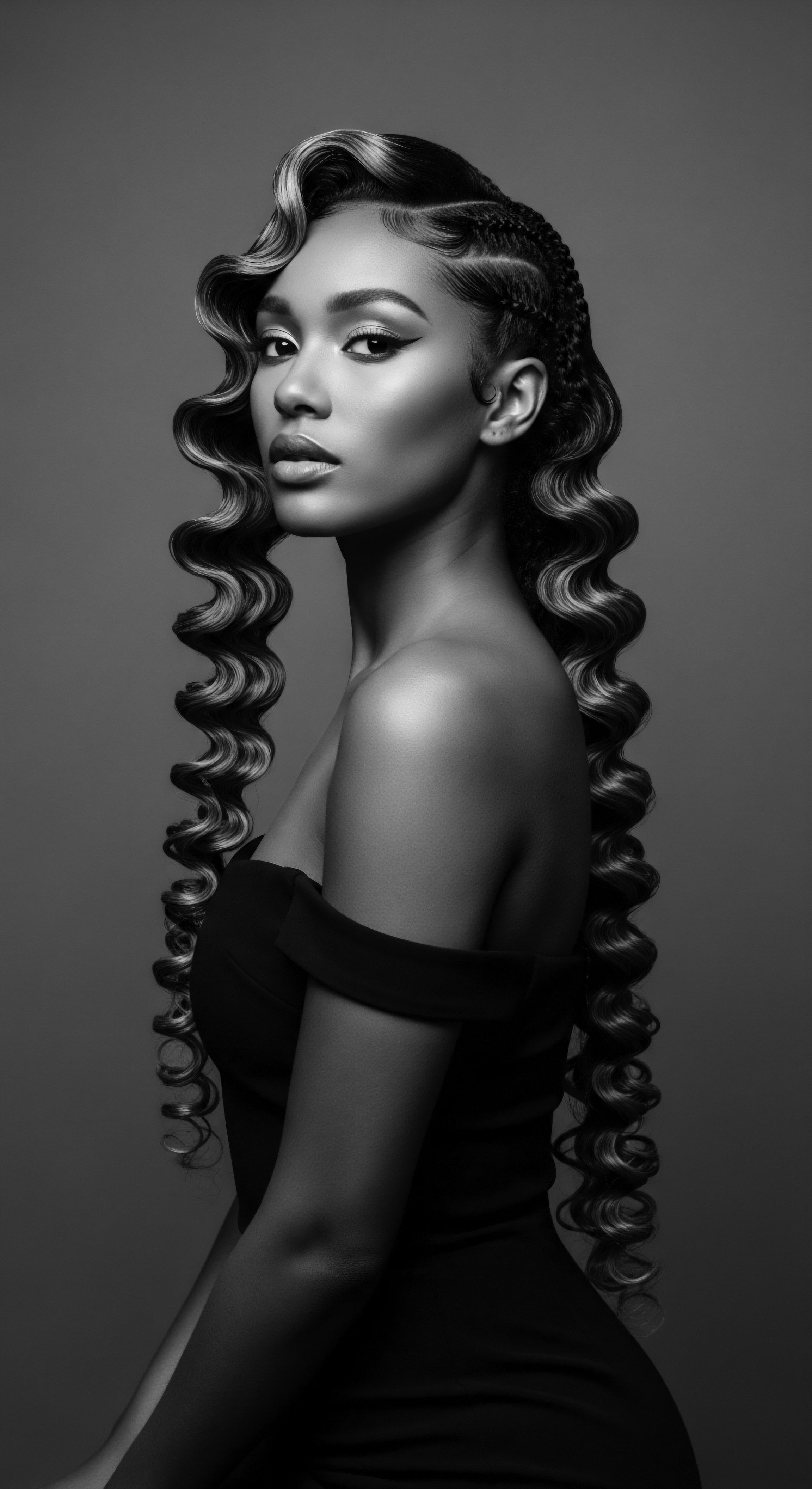
Ritual
The creation of intricate hairstyles in ancient societies, particularly those with textured hair, transcended mere aesthetic pursuit. These coiffures were living canvases, communicating narratives of lineage, community standing, and personal journeys. The time and skill invested in their crafting were substantial, rendering daily re-styling impractical.
This reality elevated the headrest from a simple sleeping aid to an indispensable tool within the daily and ceremonial rhythms of life. It secured the artistic endeavor, allowing for the longevity of styles that sometimes took hours, if not days, to achieve.

How Did Ancient Headrests Support Lengthy Hairstyles?
Consider the meticulous braiding, twisting, and adornment seen in historical accounts and archaeological findings of African hair practices. These styles, once set, benefited immensely from minimal disturbance. The rigidity of the headrest, in stark contrast to soft pillows, ensured that the delicate structures of braids or coils remained intact. Hair, particularly textured hair, compresses and deforms under sustained pressure, leading to frizz, tangles, and ultimately, the unraveling of a style.
By lifting the head, headrests prevented this direct pressure, maintaining the volume and definition of the coiffure. This protective function extended the lifespan of a hairstyle, making it a practical and culturally sensible innovation.
Headrests maintained the sculpted form of ancient hairstyles, sparing the time and effort otherwise needed for daily re-creation.

Protective Styling Through the Ages
The concept of “protective styling”—techniques designed to shield hair from environmental damage and manipulation—is deeply rooted in African hair heritage. Many contemporary protective styles, such as braids, twists, and cornrows, echo the ancient practices that headrests served to preserve. These styles, often adorned with beads, cowrie shells, or other natural elements, carried symbolic weight.
For instance, the Zulu Isicholo, an elaborate headpiece worn by married women, often incorporated the woman’s own hair, interwoven with fibers and shaped into a distinctive conical or disk-like form, sometimes colored with red ochre and fat. This historical coiffure was not designed for daily dismantling. The continued preservation of such significant styles, whether directly supported by a headrest or maintained through careful sleeping habits, speaks to a collective ancestral wisdom regarding hair care and its cultural value. These practices were communal events, where the art of styling and the knowledge of preservation were passed down through generations.
The Dinka people, residing in South Sudan, provide another compelling example. Their headrests, often carved from a single piece of wood, sometimes featured zoomorphic motifs. These objects served to preserve their sophisticated hairstyles, which were often elaborate and symbolized status. The design of these headrests—their size, shape, and even the curvature of the top platform—was a direct response to the specific needs of the coiffures they were intended to protect.
| Cultural Group Shona (Southern Africa) |
| Headrest Characteristics Often wood, sometimes passed down through male heirs, varied support elements. |
| Hair Style or Practice Connection Protected elaborate, well-oiled coiffures, some with tufts and beads. |
| Cultural Group Dinka (South Sudan) |
| Headrest Characteristics Carved from single wood pieces, often multi-legged, sometimes zoomorphic. |
| Hair Style or Practice Connection Preserved sophisticated male coiffures, served as status markers, also used as stools. |
| Cultural Group Ancient Egyptians (Kemet) |
| Headrest Characteristics Stone, wood, or alabaster, found in tombs. |
| Hair Style or Practice Connection Maintained intricate wigs and natural hair arrangements; linked to afterlife grooming. |
| Cultural Group These ancient supports were functional and culturally significant, reflecting the deep value placed on hair. |

Tools and Adornments
The toolkit for ancient hair styling, even without modern inventions, was quite comprehensive. Beyond the headrest, combs crafted from bone, wood, or ivory were essential. Archaeological finds from Kush and Kemet (ancient Sudan and Egypt) reveal combs dating back thousands of years, sometimes buried with their owners, suggesting the sacredness of both hair and its tools. Natural ingredients also played a central role, with butters, herbs, and powders used for moisture retention, which would further contribute to the longevity of a protected style.
This interplay of carefully chosen tools, skilled styling techniques, and the judicious use of headrests created a system of hair preservation that allowed communities to express their identity through their hair for extended periods. It demonstrates an ancestral understanding of hair care that aligned with both practical needs and profound cultural expressions, shaping the heritage of textured hair artistry.
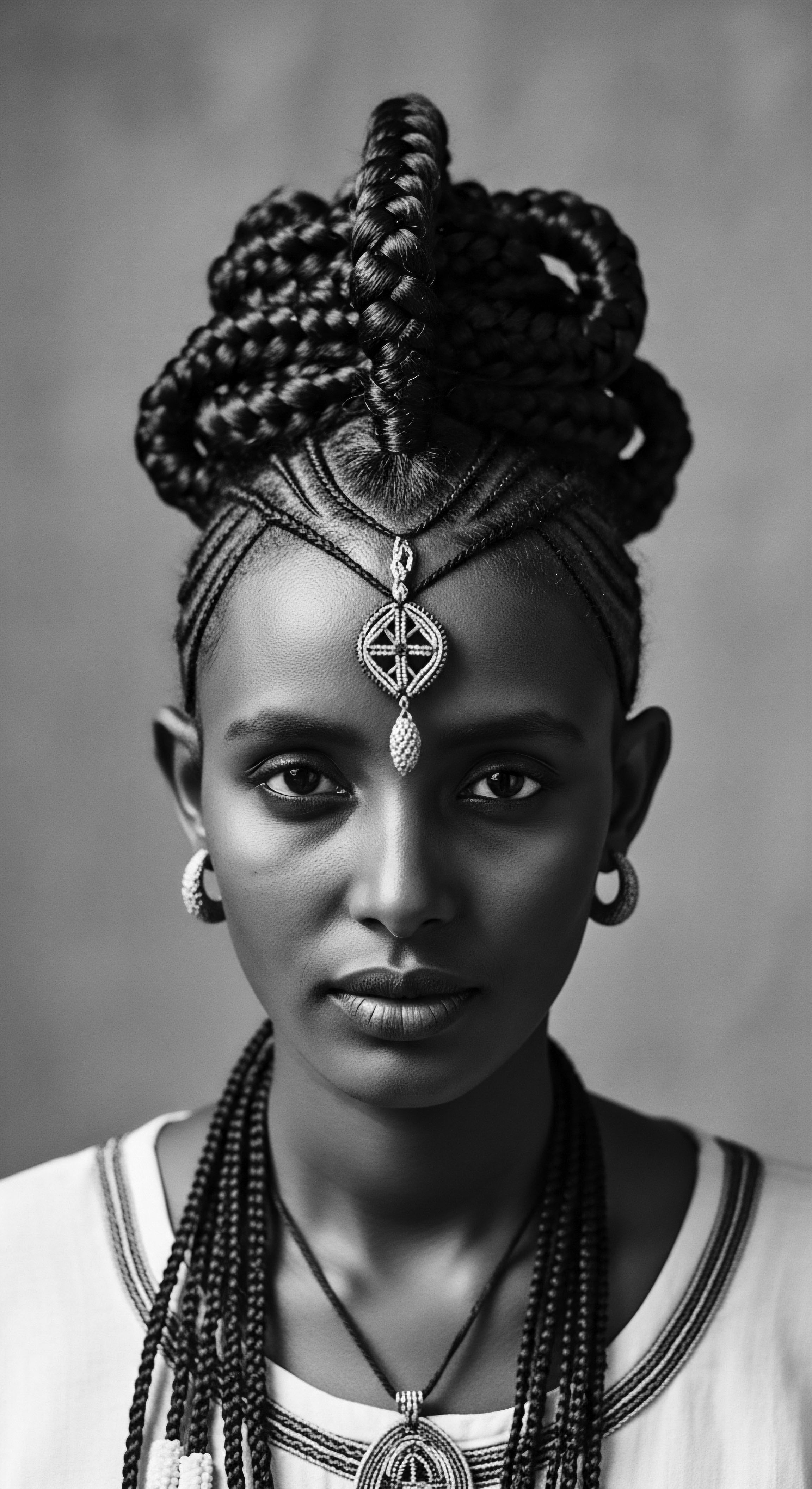
Relay
The narrative of textured hair is not merely a biological tale; it is a profound cultural text, etched in communal practices, ancestral memory, and the very fibers of individual identity. The ancient headrest, as a material artifact, served as an extraordinary conductor in this relay of heritage, linking daily existence to profound cultural meaning. Its role in preserving intricate hairstyles, often statements of social standing, spiritual adherence, or readiness for adulthood, positions it as a silent witness to the vitality of African civilizations.
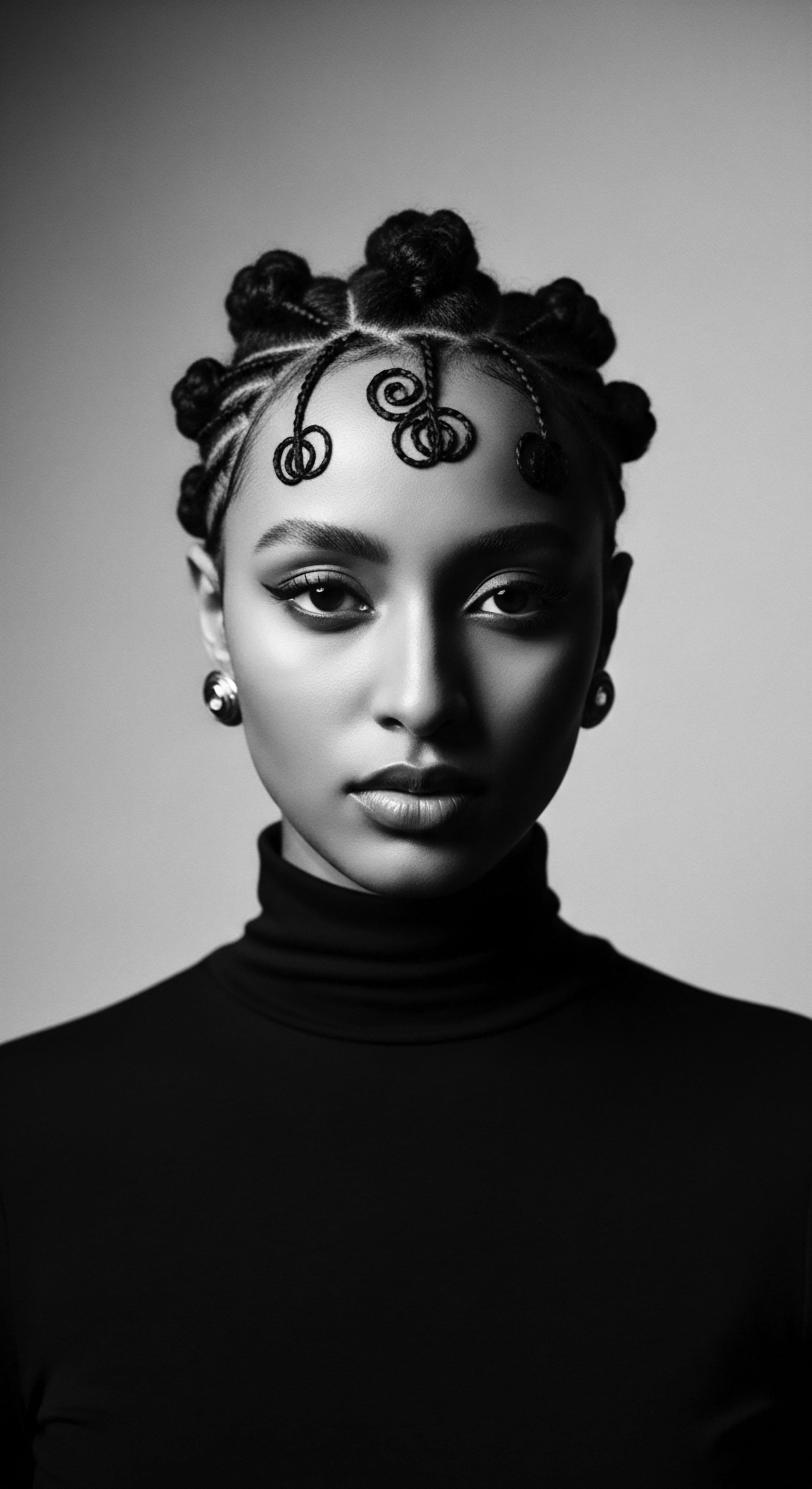
The Interconnectedness of Hair, Status, and Spiritual Life
In many pre-colonial African societies, hair was regarded as the highest point of the body, a spiritual gateway, and a powerful symbol of identity. Hairstyles communicated belonging within ethnic groups, marital status, age, and even military rank. The creation of these coiffures was a public art, often performed in communal settings, strengthening social bonds and transmitting knowledge. The longevity of these styles, facilitated by headrests, allowed these visual declarations to persist, reinforcing social structures and individual roles.
For instance, the Zulu people’s Isicholo, an elaborate headpiece worn by married women, originally involved building the woman’s own hair into a large, twined, conical shape. This was a direct sign of her marital status and respect for her husband’s family. By the 1950s, while the tradition of growing hair for the hat waned, removable hats mimicking the style emerged, underscoring the enduring significance of the form itself as an icon of Zulu identity. The use of red ochre and fat to grease these original hair-hats further speaks to a traditional understanding of hair conditioning that prolonged the style’s integrity, an understanding that would complement the use of headrests for maintenance.
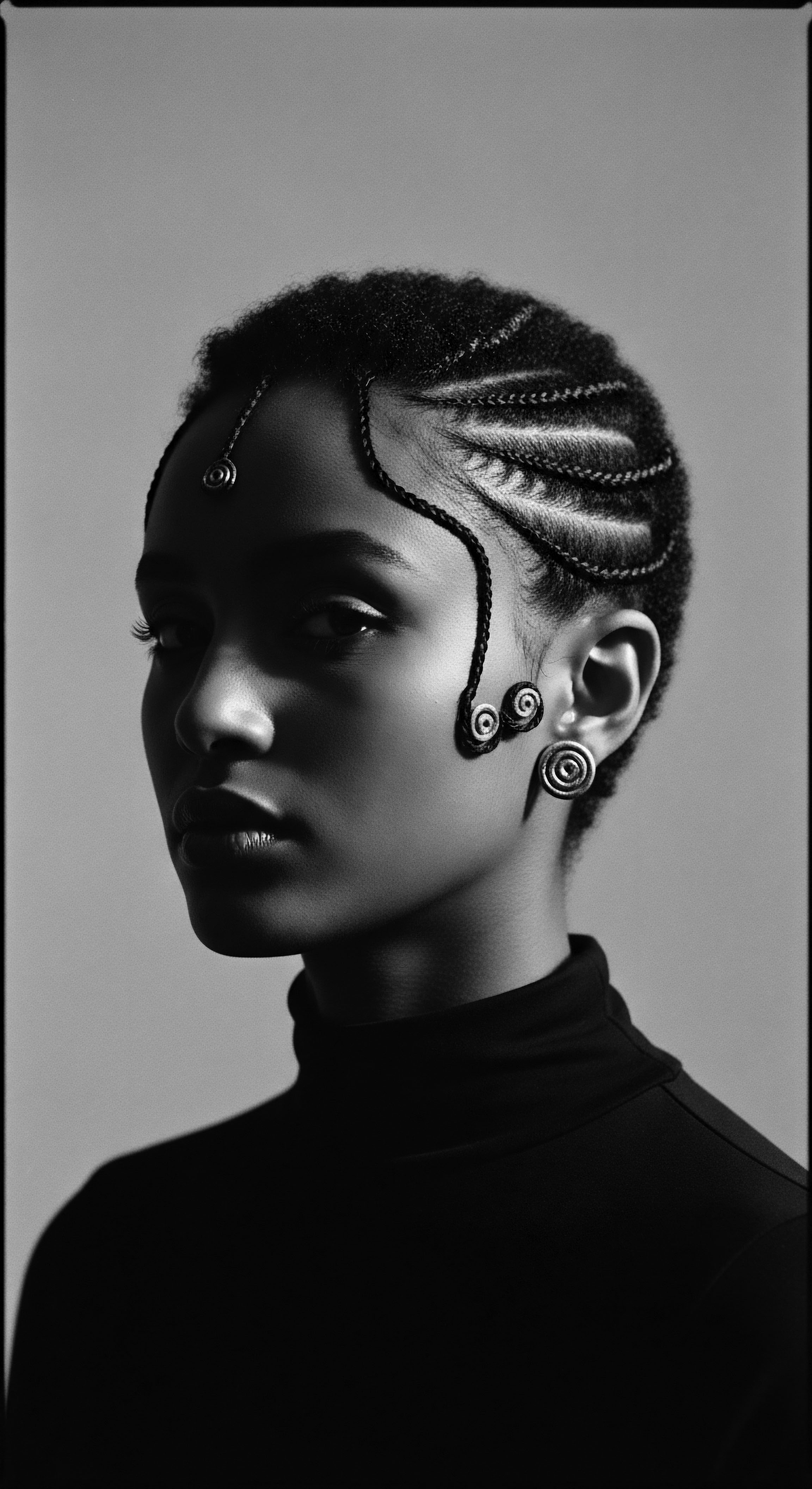
What Can Headrest Iconography Reveal About Ancient Beliefs?
Beyond their practical application, headrests often carried symbolic weight and were frequently adorned with carvings reflecting cultural beliefs, animal motifs, or abstract patterns. Some were personal items, believed to house the soul of the owner, and were buried with them, further underscoring their deep connection to individual identity and the ancestral realm. This integration of utility with spiritual or social symbolism elevates the headrest beyond a simple tool; it becomes a piece of material culture deeply woven into the fabric of life and the continuity of generations.
The Shona and Tsonga headrests of Southern Africa, for example, demonstrate varying stylistic features, sometimes hinting at gender associations or simulating female scarification. Their continued use in religious and ritual functions, such as praying to ancestors, even after elaborate hairstyles became less prevalent, points to their enduring spiritual significance. Dreams, considered an important means of acquiring knowledge and resolving problems in Shona society, were also linked to headrest use. This layering of meaning—practical object, status symbol, spiritual conduit—reflects the holistic worldview prevalent in many ancient African cultures.
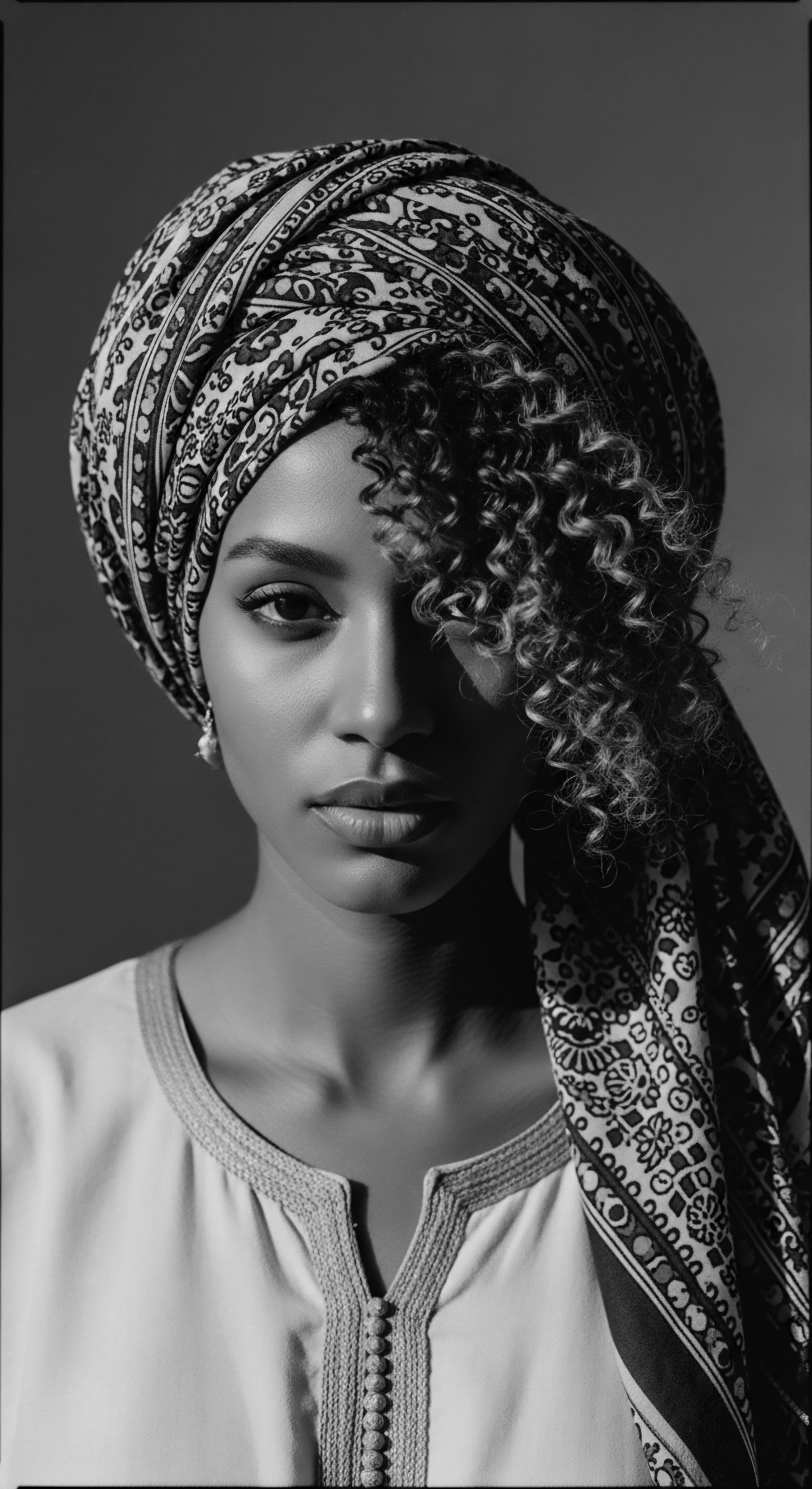
The Ancestral Echo in Modern Self-Acceptance
The historical practices surrounding headrests, particularly in their connection to textured hair, offer valuable context for understanding the contemporary journey of Black and mixed-race communities towards hair self-acceptance. During periods of colonialism and slavery, African hairstyles were often suppressed or devalued, with forced shaving and the imposition of Eurocentric beauty standards. This historical suppression highlights the profound resilience inherent in the continued traditions of textured hair care and styling, even in the diaspora.
The natural hair movement of recent decades can be understood, in part, as a reclaiming of this ancestral legacy. It is a conscious choice to honor the hair’s natural form, much as ancient peoples honored their coiffures with the aid of headrests. The enduring cultural significance of hair for people of African descent, as a symbol of identity and resistance, is a testament to this powerful heritage. As Byrd and Tharps (2002) articulate, the story of Black hair is deeply intertwined with broader narratives of history, struggle, and beauty.
The humble headrest, in its silent steadfastness, reminds us that the preservation of hair was never simply about vanity. It was a practice deeply connected to identity, community, and a profound respect for the self and one’s lineage. Its continued study contributes to a fuller understanding of how ancestral ingenuity supported not just a physical form, but a vibrant cultural inheritance.

Reflection
The journey through the history of ancient headrests and their profound connection to textured hair heritage unearths a timeless wisdom. These objects, simple in their physical form, were central to complex systems of cultural expression and personal well-being. They stand as quiet monuments to human ingenuity, born from a deep, observational understanding of hair’s nature and its societal role. The enduring spirit of the strand, in its coil, its bend, its strength, truly finds its echo across centuries, linking the rituals of ancient sleep to the mindful care we pursue today.
The lessons gleaned from these ancestral practices extend beyond mere historical curiosity. They beckon us to reconsider our relationship with our own hair, not just as a biological entity, but as a living archive of identity, a canvas for self-expression, and a direct line to the resilience of our forebears. The protective wisdom embedded in the use of a wooden headrest or a carefully tied scarf mirrors the mindful choices made in today’s routines, reaffirming that the care of textured hair is, at its heart, an act of honoring a continuous, vibrant legacy. This ongoing dialogue between past innovation and present understanding illuminates the profound depth of textured hair heritage, a testament to the enduring soul of every strand.

References
- Akanmori, H. (2015). Hairstyles, Traditional African. In The SAGE Encyclopedia of African Cultural Heritage in North America (pp. 440-444). SAGE Publications, Inc.
- Byrd, A. D. & Tharps, L. L. (2002). Hair Story ❉ Untangling the Roots of Black Hair in America. St. Martin’s Press.
- Dewey, W. J. (1993). Sleeping Beauties ❉ The Jerome L. Joss Collection of African Headrests at UCLA. Fowler Museum of Cultural History, University of California, Los Angeles.
- Koch, S. L. Tridico, S. R. Bernard, B. A. Shriver, M. D. & Jablonski, N. G. (2020). The biology of human hair ❉ A multidisciplinary review. American Journal of Human Biology, 32(2), e23316.
